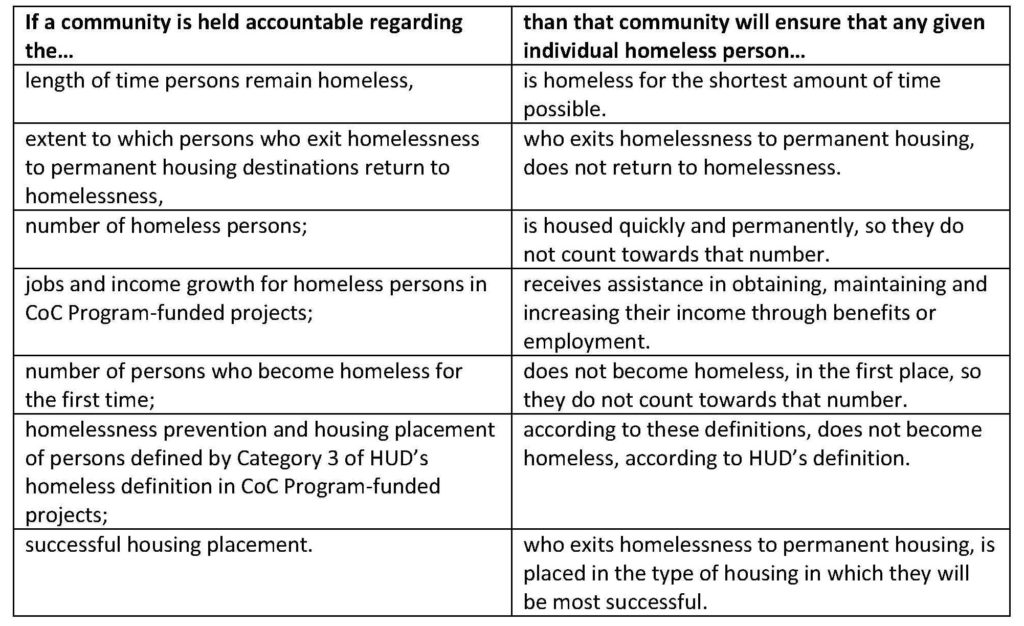“A Homeless Management Information System (HMIS) is a local information technology system used to collect client-level data and data on the provision of housing and services to homeless individuals and families and persons at risk of homelessness.”[i] Such a system has been required in every community since 2001, with this requirement formally codified by Federal Statute in 2009.[ii]
HMIS does not just collect data; it is used to measure performance: “HUD[iii] has developed the following seven system-level performance measures to help communities gauge their progress in preventing and ending homelessness:
- Length of time persons remain homeless;
- The extent to which persons who exit homelessness to permanent housing destinations return to homelessness;
- Number of homeless persons;
- Jobs and income growth for homeless persons in CoC Program-funded projects;
- Number of persons who become homeless for the first time;
- Homelessness prevention and housing placement of persons defined by Category 3 of HUD’s homeless definition (i.e. persons who don’t fit into HUD’s definition of homelessness, but meet other Federal definitions of homelessness) in CoC Program-funded projects;
- Successful housing placement.”[iv]

While discussions of HMIS’ benefits usually focus on systems, be they local, state or national[v], system-level performance accountability drives communities to better help any given homeless person. It is easy to show how this works through these if-than propositions[vi]:

Not only that, if a community ensures that any given homeless person receives such assistance, the system’s performance will improve, creating a virtuous cycle:

Further, HUD carefully considers a community’s system
performance, when it awards that community funding through the Continuum of
Care Program Competition. The better a community’s system performance, the more
money comes into the community, which enables the community to house more persons
experiencing homelessness, creating another virtuous cycle.[vii]
[i] https://www.hudexchange.info/programs/hmis/
[ii] https://www.hudexchange.info/programs/hmis/hmis-requirements/
[iii] United States Department of Housing and Urban Development
[iv] https://www.hudexchange.info/resources/documents/system-performance-measures-in-context.pdf
[v] See, for example, this general introduction of HMIS on HUD’s website: “(HUD) and other planners and policymakers use aggregate HMIS data to better inform homeless policy and decision making at the federal, state, and local levels. HMIS enables HUD to collect national-level data on the extent and nature of homelessness over time… understand patterns of service use, and measure the effectiveness of homeless programs… Through their HMIS, a community should be able to collect information… to use as part of their needs analyses and to establish funding priorities.” (https://www.hudexchange.info/programs/hmis/hmis-requirements/)
[vi] (Read each of the chart rows, with the bolded heading preceding them. For example: If a community is held accountable regarding the length of time persons remain homeless, than that community will ensure that any given individual homeless person, is homeless for the shortest amount of time possible.)
[vii] MDHA is thankful to Cindy Patrick, of the Meadows Foundation, for having asked the question that inspired this short essay.





